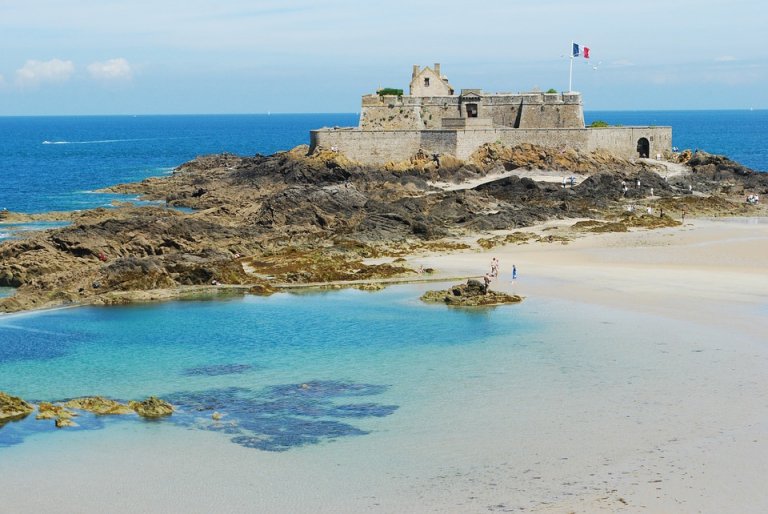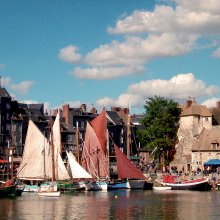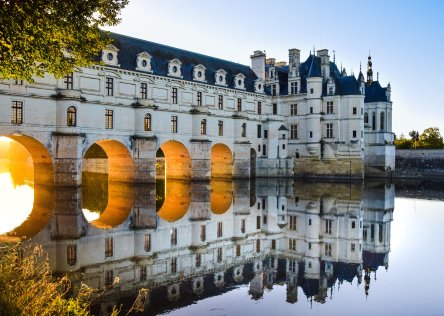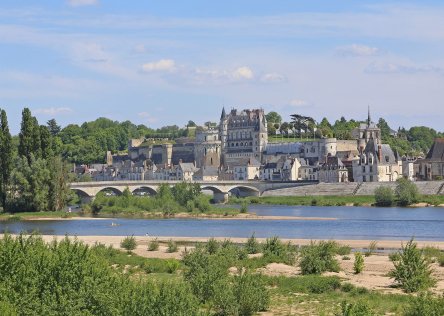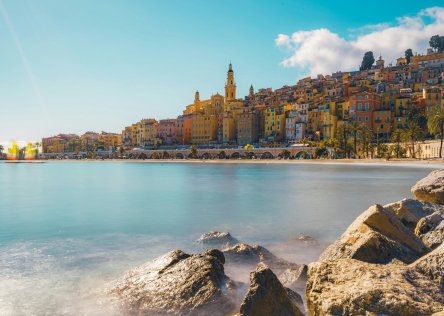The lovely port city of Saint Malo is a popular tourist destination and one of the jewels of the Brittany coast. In 2018, Saint Malo Beach was named the nicest beach in France. Here we give you an overview of the history of this charming town and some things to do and see in Saint Malo if you plan to spend a day there.
If you'd like to visit Saint Malo, why not take a look at our Brittany self-drive tours? A stop in St Malo can also be included in our self guided tours of Normandy.
The History of Saint-Malo
Before we give our recommendations on the best things to see and do in St Malo, it will help to know a bit about the city's history.
Saint Malo's position on a rock at the mouth of the Rance estuary has offered the city an excellent natural defence against invaders since pre-Roman times.
Interestingly, the walled city of Saint Malo was in fact named after a Welsh monk and a disciple of St Brendan called Maclovius.
At that time, Brittany was known as Armorica, and many Celts moved there to escape the unrest in Roman Britain across the English Channel.
From the 16th century onwards, Saint Malo became an important port area due to its strategic position on the French coast. It was a convenient stop-off point for commercial ships that were heading south from the North Sea and England and it was also popular with corsairs and explorers.
Corsairs, also known as French privateers, who were essentially state-approved pirates who had the permission of the French government to engage in war against foreign ships to attempt to commandeer them and take them as prizes.
As well as forcing English ships on the Channel to pay a tribute to them, the corsairs of St Malo would bring home riches from far and wide. At this time, piracy was very common and many became rich from their chosen way of life at high sea. The English and Dutch merchant navy would have been prepared for violent encounters with the St Malo corsairs.

A statue of Robert Surcouf, a Saint-Malo corsair (Guillaume Piolle - C.C. by 3.0)
Departure Point for Voyages to the ‘New World’
Aside from its association with a violent history of piracy, St Malo was also known as a departure point for voyages across the Atlantic Ocean to the ‘New World’.
One of St Malo’s most famous citizens and explorers, Jacques Cartier, was born there in 1491. On 20th April 1534, he embarked upon a voyage of discovery towards new lands. Eventually he landed on modern day Quebec in Canada, which he named ‘New France’.
If you plan to spend a day in St Malo, you may like to visit the museum La Maison du Québec (The House of Quebec), which is dedicated Jacques Cartier’s discovery. The explorer himself was buried in Saint Malo Cathedral, also called the Cathedral of St Vincent.

A painting of Jacques Cartier landing in Hochelaga in 1535 (now modern-day Quebec)
Adrien Hébert CCSA by 4.0
The Medieval Ramparts
The impressive walls that surround the city today actually date back to the 17th century, when they were extended to offer further protection from outside attacks. Unfortunately, these walls could not provide sufficient defence against the Allied and German bombings of World War II, when much of the city was destroyed. The ramparts themselves, however, remained intact.
The old town of Saint Malo was rebuilt in the years following the war, between 1948 and 1960. Though the city has changed, great efforts were made to remain true to the former style and there were no modern-style developments. As a result, the skyline remains much as it was previously.

The ramparts enclosing the old town of Saint-Malo (CC by 3.0 Moonik)
Nowadays, St Malo is Brittany’s most-visited city. Every summer, tourists flock to the stunning and vast sandy beaches, wander through the quaint streets of the reconstructed old town and marvel at its fascinating history. Here we recommend some of the best things to do in St Malo.
Things to do in St Malo
If you book one of our France tour packages, we can arrange a stop in St Malo as part of your Brittany road trip or in our tours of Normandy. It takes about an hour to get to St Malo by car from the Mont Saint Michel area.
The walled city
Known in French as La Ville Intra Muros, a wander through the old town is a must when visiting Saint Malo. The historic center is very much a lived-in part of the city, with plenty of shops and services. There is some traffic, but there is limited access to particular streets. If you're traveling with France Just For You, we will tell you about some good parking spots just outside the old town if you visit Saint Malo.
The cobbled streets of the walled city are full of charm and wonderful for strolling. There are plenty of small local shops to explore, cafes and restaurants, and benches that are perfect for people-watching while you enjoy an ice cream.

An aerial view inside the walled city of St Malo, Brittany (Pline - CC by SA 3.0)
St Vincent’s Cathedral
Also known as St Malo Cathedral, you should certainly pay a visit to this gorgeous Romanesque, Gothic and Renaissance-style cathedral inside the walled city.
It houses the tomb of Jacques Cartier, the Saint-Malo native mentioned above, who discovered Canada in the 16th century.
Some parts of the cathedral have undergone extensive renovation work following attacks on the city over the centuries. The most recent work took place over more than two decades, to repair the damage inflicted upon the cathedral by the World War II bombings. The beautiful stained glass windows are a particularly stunning sight to behold, depicting scenes from the city’s history.

Stained glass windows in St Malo Cathedral (Flickr sagesolar CC by 2.0)
The ramparts
The iconic walls surround the city of St Malo for about 2km (just over a mile). Climb up using the steps at one of the city gates or the castle and enjoy sweeping views across the sandy beaches, the Rance estuary and the harbor.
It is worth planning a walk along the walls in order to appreciate this magnificent and historical seascape. You might be interested in stopping by at the Maison du Québec along the way, which offers visitors a glimpse at modern day Quebec through a photographic exhibition. It also tells the story of Jacques Cartier and how he founded ‘New France’ upon his exploration of Canada.

Maison du Quebec in Saint Malo (Marianna - CC by SA 3.0)
St Malo beach
St Malo is famous for its beautiful sandy beaches and views of the ramparts and offshore fortresses. The Grande Plage du Sillon is a huge stretch of beach slightly away from the town that neighbors the Plage de l’Eventail and Bon Secours beach to the south (nearest to the town). It is perfect if you want to go for a stroll along the beach, heading north away from the old town.
Bon Secours Beach is right next to the walled city and can be accessed via the city walls. It is one of the best-equipped beaches, with a walled-off seawater swimming pool, a lifeguard station, refreshments and kayaking opportunities. It offers postcard views of the ramparts as well as the Vauban and Grand Bé fortresses.
Across from the Fort National, a vast 17th-century granite fortress, is Eventail Beach. It can get very busy at low tide, the only time when the national fortress and the Petit Bé fortress are accessible. This beach is popular with families and has a lifeguard during the summer months. There are some charming creeks along the coast that are less busy and a few kiosks selling snacks along the promenade. The beach can be accessed from the Rue du Sillon, near to the casino, and there is paid parking nearby.
If you prefer a more secluded, natural setting with protection from the winds, drive up the coast to the lovely Nicet Beach. Be aware that access to the beach is via steep steps.
Browse our self-drive tours of Brittany and get inspired!

Fort National at St Malo beach (Pixabay)
The fortresses of St Malo
Just offshore, Saint Malo has some island fortresses that date back to the 17th and 18th centuries. The Fort National, accessible at low tide via the beach Saint-Malo Plage de l'Éventail, is part of the national Vauban UNESCO world heritage site. It was designed and built by the great French military architect Vauban in 1689, during an era when St Malo was very much a corsair city.
The Fort du Grand Bé and the Fort du Petit Bé are also accessible on foot from St Malo beach when the tide is out.
On the rocky island of the Grand Bé fortress, you will also find the grave of French writer Chateaubriand, who, according to German-American historian Peter Gay, "dominated the literary scene in France in the first half of the nineteenth century", and was the founder of Romanticism in French literature.
Other places of interest
If you have more time available, you may also like to visit the Grand Aquarium, one of the biggest aquariums in France; the only surviving home of a former St Malo corsair, La Demeure de Corsaire; or the Jacques Cartier Museum, the former farmhouse home of 16th-century explorer Jacques Cartier.
Some of the best restaurants in St Malo
For some delicious crepes, try the Crêperie Le Tournesol in the walled city, which is bursting with character. They also do a great cider. For some huge and tasty seafood platters, try L’Ancrage, and for an excellent French bistro that is popular with the locals, head to the Cargo Culte. Their quiches and salads are especially good!
How to get to St Malo
From Mont St Michel, you can drive to St Malo in about an hour. The town also has a train station, Gare de Saint-Malo. There are direct trains from Gare Montparnasse in Paris, but these take three hours and are infrequent, so be sure to check the schedule beforehand.
Add a day trip to St Malo to one of our Normandy tours or Brittany tours!
